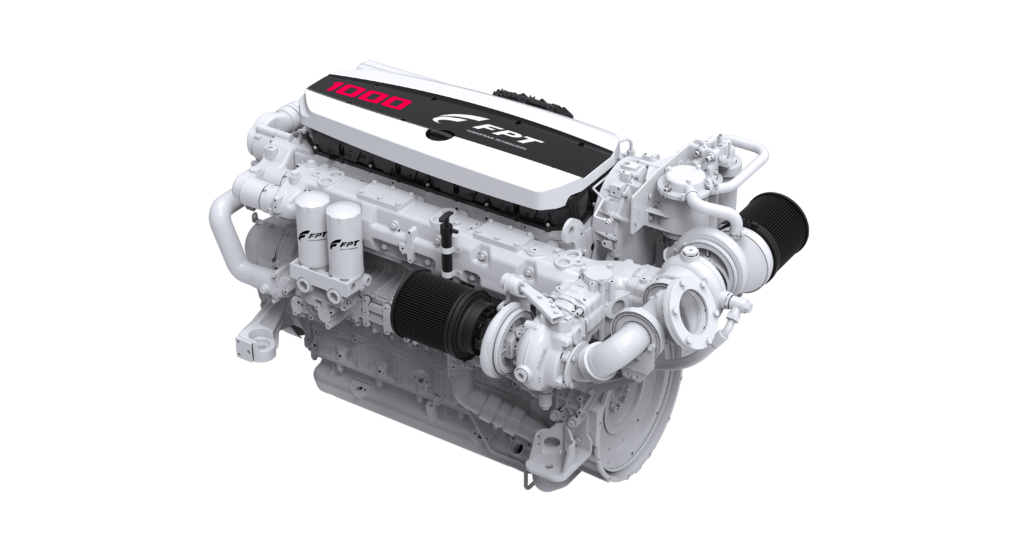An engine with performance, speed, reliability and durability. All these advantages, plus the fact that it holds a Guinness World Record, can now be part of your boat. FPT Industrial C16 1000 marine engine is being launched in New Zealand by Lees Group, at the Auckland On Water Boat Show.
From October 3rd to 6th, visitors at the Viaduct Harbour can check out the C16 1000 marine engine from FPT Industrial, leader in the design, production and sale of powertrains for marine applications and other industrial segments. The engine will be on display at Lees Group exhibition stand EV123.
A racing version of the C16 engine, specially designed to reach up to 1,700 horsepower, powered the fastest Diesel powerboat in 2018, which arrived at 277.5 km/h in Lake Como, Italy, beating the previous record from 1992. This was accomplished joining the expertise and innovation of Fabio Buzzi’s FB Design and FPT Industrial teams at its R&D Center in Arbon (Switzerland), its Turin Testing Center (Italy), and its plant in Pregnana Milanese (Italy) specialised in the customisation of marine engines.
The new C16 1000 is developed for light commercial and pleasure applications and distinguishes itself for providing top performance and high durability with the compactness and the lightness of a 13-liter engine. It is the only 16-liter engine on the market to fit in the packaging of a 13-litre, providing easy installation and wider space on board.
Technical features include a 6-cylinder in-line architecture, the latest generation Common Rail injection system (up to 2,200 bar), maximum power of 1,000 hp and torque of 3,500 Nm – placing itself among the best performances of the category.
Moreover, the engine has a service period of 600 hours, which translates into easier and cheaper maintenance operations. The C16 1000 has strong new material components inside and has been designed with specific air, water, oil and fuel circuits to maximise resistance to salt and water.
Finally, like the other FPT Industrial engines, the C16 1000 respects the most stringent emissions regulations. It has reduced impact on the environment in terms of gas emissions, noise, and vibrations, providing also a high navigation comfort.


